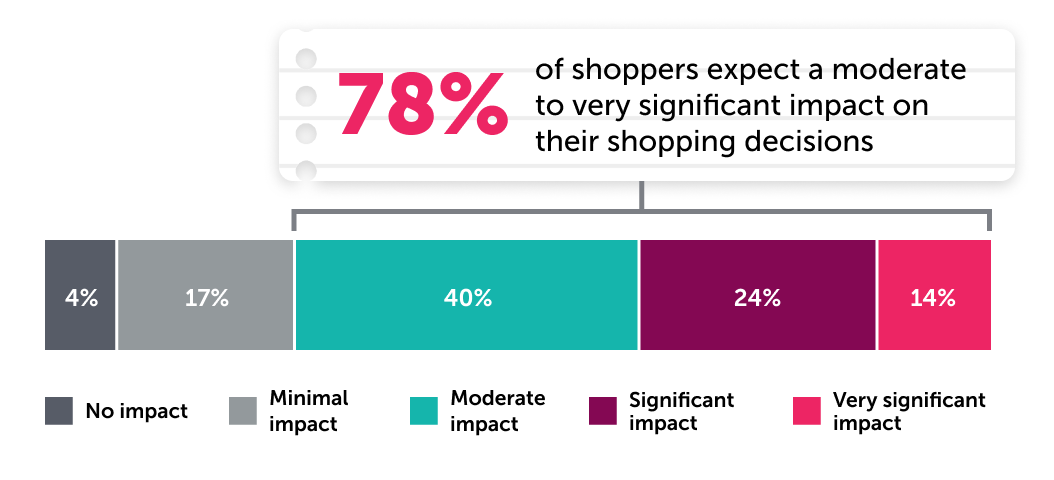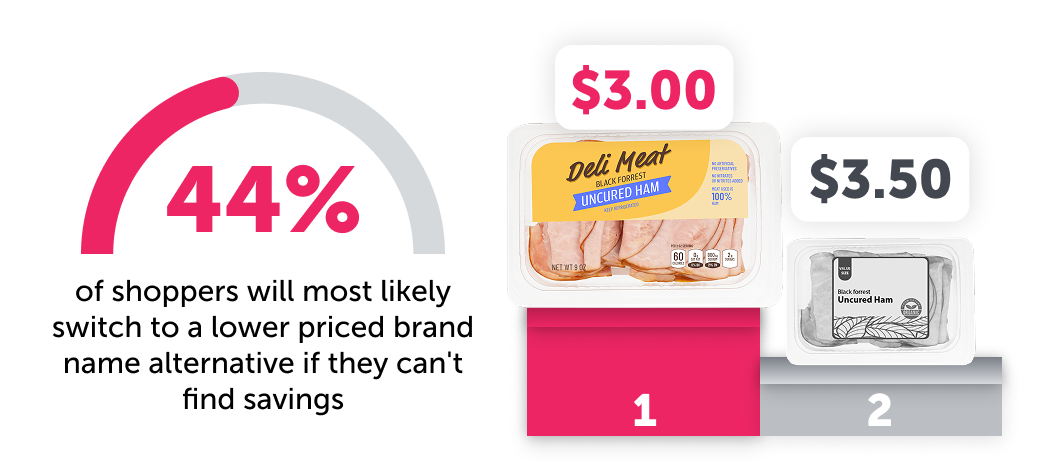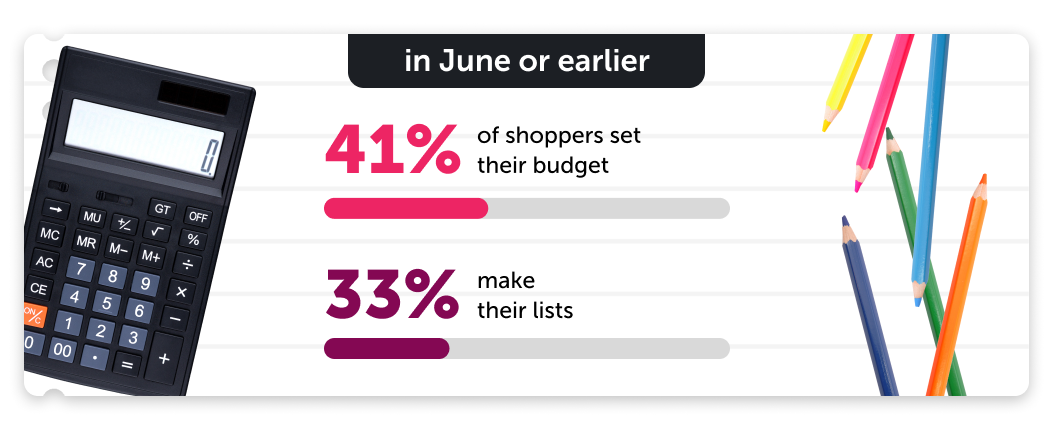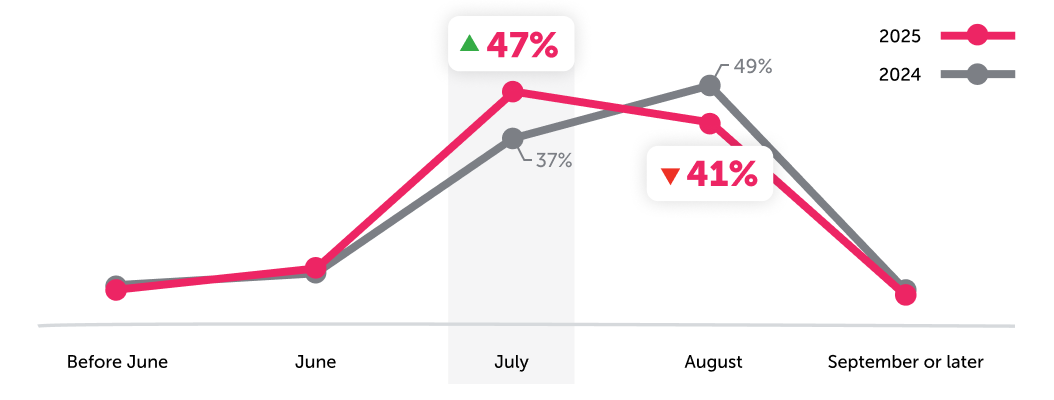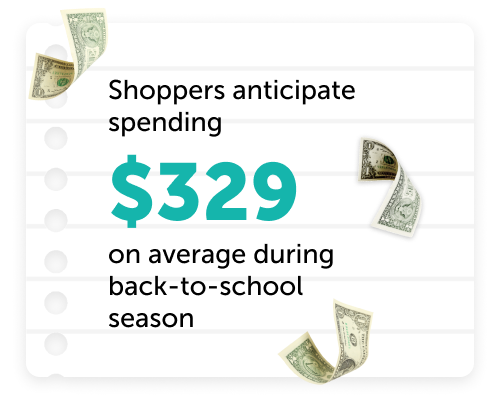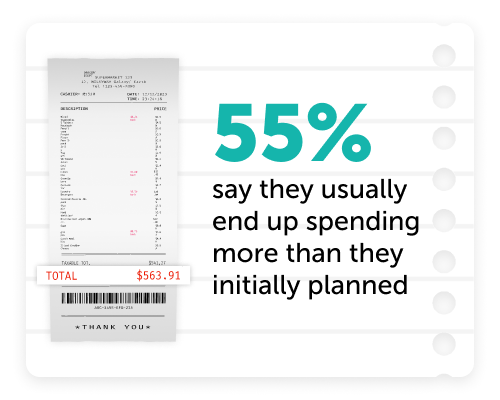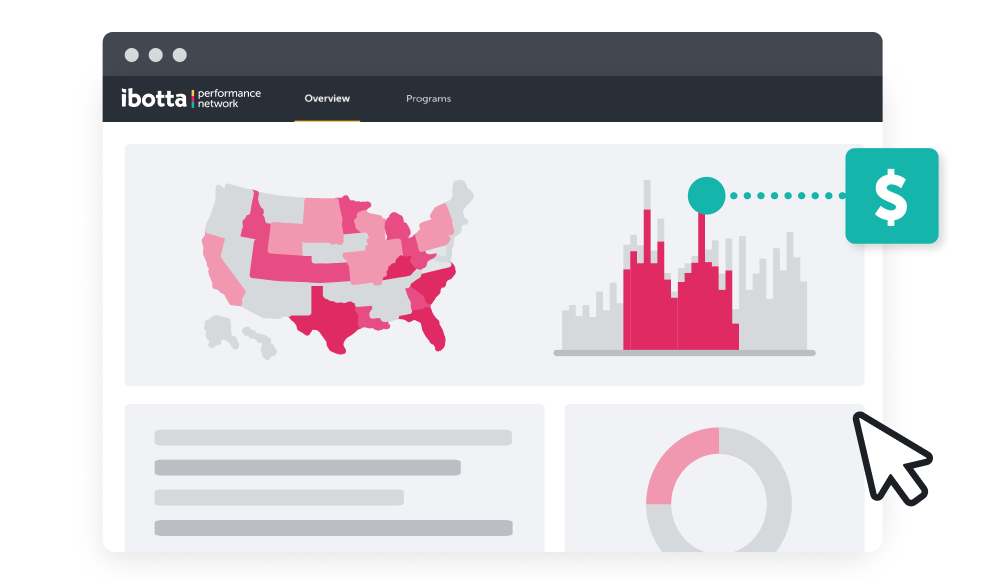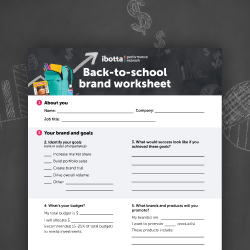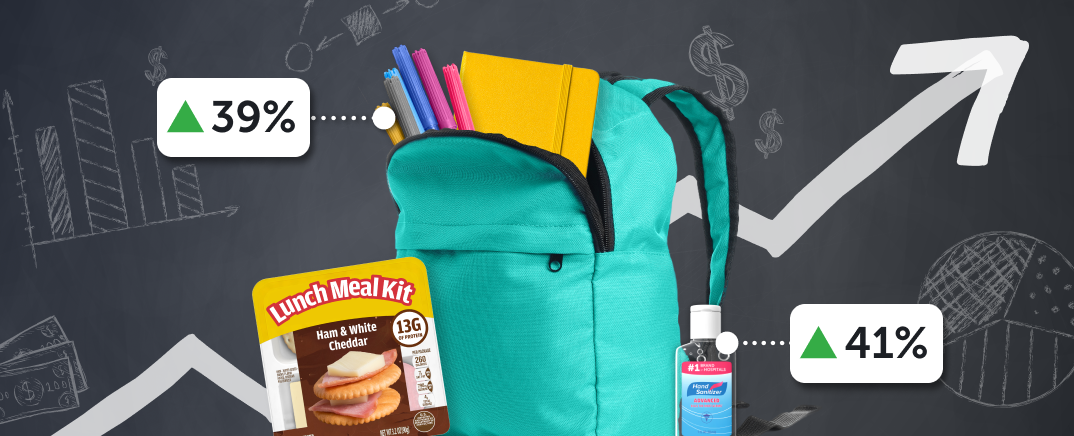
May 8, 2025
In the current economic climate, consumers are actively seeking ways to save money. This need for savings is particularly pronounced when it comes to back-to-school shopping. The rising costs of school supplies are putting a significant financial strain on parents and students, with a recent Bankrate survey revealing that nearly a third of shoppers — 31% — say these expenses will push them into debt.
In a recent survey of Ibotta app users, we found that 78% of back-to-school shoppers expect rising prices to impact their shopping decisions at least moderately, with 38% of that group saying it will affect them significantly. Further, 77% of survey respondents prioritize getting the best deals during back-to-school shopping. Truly resonating with back-to-school shoppers requires brands move beyond generic advertising. Running digital promotions not only helps consumers save money when they need it most but also drives results for your brand.
Overall, how much do you expect rising prices to impact your back-to-school shopping decisions this year?
Digital promotions provide the tools for targeted engagement and personalized experiences. By leveraging data and technology, brands can deliver relevant offers and build meaningful connections with consumers across various digital touchpoints. This level of engagement is crucial for capturing attention, driving conversions, and fostering long-term customer relationships during this competitive season. Utilizing a platform like the Ibotta Performance Network (IPN) can do just that, maximizing your marketing spend and helping you achieve your goals.
How to make the most of your back-to-school budget with the IPN
1. Identify your campaign goal
There are four primary goals that many brands look to achieve during key seasonal windows such as back to school. Whether you want to build sales across your portfolio of brands or drive trial, it's critical to identify a goal that is most important for your brand. Doing so ensures that specific campaign parameters are optimized accordingly to achieve key results.
Goal #1: Increase market share
It’s no secret that brands spend big on back to school to win market share. Marketing Brew and iSpot revealed that retailer and brand advertisers spent an estimated $50 million on their back-to-school campaigns in July and the first two weeks of August, which was up 35% year over year. With the increase in competition during the season, increasing market share can be a major goal for brands in 2025.
Another big reason why brands might aim to increase market share is because of growing threats from private label brands. Receipt data shows that major school supply categories such as coloring (+39%), painting (+13%), and cleaning and air fresheners (+41%) all saw increases in private label units moved from August 2023 to August 2024. These lifts in private label sales come as no surprise. Our survey of over 1,000 back-to-school shoppers showed that, if necessary, they will plan to purchase private label products as a cost-saving strategy for the season. Forty-two percent of survey respondents said they will most likely buy the store brand if they can’t find cash back or savings on what they’re looking to purchase in at least one back-to-school category.
Goal #2: Build portfolio sales
With dozens of items on back-to-school shopping lists ranging from apparel, classroom supplies, food, and more, driving sales across a portfolio of products is often a main objective for brands during the season. Leveraging digital rewards can be an impactful way to drive awareness and sales across your many brands. For example, when General Mills partnered with Ibotta during the back-to-school season to promote the entirety of their portfolio, they saw a 25.5% increase in units per basket and a 24.4% increase in total category purchases across eight total categories.
Goal #3: Create brand trial
Our annual back-to-school survey showed that 44% of shoppers will most likely buy a lower priced brand name alternative if they can’t find cash back or savings on what they’re looking to purchase in at least one back-to-school category. This high propensity for consumers to change their normal purchase behavior makes the back-to-school season a prime opportunity for brands to create brand trial.
By running promotions on the IPN, you can drive customer acquisition and convert category buyers to your brand. One national soft drink brand executed an IPN campaign to drive awareness of their new product. The results showed a 228% lift in daily units moved vs the pre-campaign period. Plus, 42.4% of the client brand’s redeemers exclusively purchased a competitor's soft drink brand previously, displaying digital promotions’ ability to disrupt brand loyalty. Look to drive a new or innovative product for the back-to-school season, as it can be a prime opportunity.
Goal #4: Drive overall volume
EMARKETER reported sales growth for the back-to-school season over the last four years and 2024 saw total sales of more than $81 billion. For many brands, back to school is a critical seasonal moment to hit volume targets for the quarter or even the year, especially for those in categories directly related to the school supply market. Leveraging digital promotions can ensure products are moved in the most efficient way and drive incremental sales by increasing units moved, converting brand or category buyers, driving new customer acquisition, and more.
2. Follow industry best practices
Drawing from over a decade of experience in the promotions space, we’ve discovered proven techniques to ensure your campaigns succeed during key seasonal moments. Adhering to these best practices — and leveraging our pay-per-sale model — will ensure none of your marketing dollars go to waste.
Best practice #1: Launch offers early
Our 2024 back-to-school survey uncovered nearly half (41%) of shoppers set their budget and 33% make their lists in June or earlier. Launching offers early ensures that your brand is top of mind as shoppers make their back-to-school shopping lists. Capitalizing during the consideration phase of the purchase cycle makes your brand one to search for when they’re ready to stock up for the school year.
New data from our latest survey of Ibotta users also shows that the majority of back-to-school shopping will occur earlier in 2025. Shoppers are opting to make more of their purchases in July (+10% YoY) instead of August (-9% YoY). This further emphasizes the importance of launching your offers earlier in the summer to not miss the peak shopping window.
Best practice #2: Provide significant user rewards
Research from our 2024 back-to-school survey found that 61% of back-to-school shoppers look for deals on food items, and when they can’t find the deals they want on those items, 70% say they’ll simply buy store brand or lower-price name brands. Providing a significant user reward can be the determining factor in a consumer’s decision to choose your brand over a private label or a branded competitor while shopping for school supplies.
Cash back levels greatly influence the number of redemptions on campaigns. One brand within the apparel category saw a 460% lift in average velocity from increasing cash back from 5% of MSRP to 20%. That’s why we recommended that the cash back reward should be 20% or more of the product’s MSRP, providing significant value to the consumer while optimizing for efficient incremental sales.
Best practice #3: Expand offer breadth
During the 2024 back-to-school shopping season, about half of shoppers’ purchases were influenced by coupons, sales, or promotions, according to the National Retail Federation (NRF). With consumers putting such a high emphasis on getting deals on school essentials, it’s important to have offers on a wide variety of products to drive stronger campaign performance. And with back-to-school lists being so large, running multiple campaigns could increase basket size by promoting multiple products for consumers to choose from. Limiting a campaign to only a few offers with limited offer details often drives a lower volume of redemptions, so think big with your promotions strategy.
Best practice #4: Leverage media investment
Our survey data shows shoppers anticipate spending $329 on average during the back-to-school season. However, 55% say they usually end up spending more than they initially planned. As the back-to-school season drives greater consumer spending, brands should consider ways to strengthen and amplify their marketing efforts to capture more market share. One way to cut through the noise is by leveraging media placements. Our data shows that investing 15-25% of the total redemption budget in media placements will set your brand up for success.
Tap into high-impact ad products on Ibotta Properties. These in-app and external placements include banners, takeovers, emails, and push notifications. Based on a comprehensive 8-week analysis of the consumer journey, we found that combining advertisements and offers significantly boosts upper funnel metrics, driving a 29% lift in offer impressions and 4% in unlocks.
Retailer merchant placements can also be a great way to amplify your offers. Utilizing solutions from retail media networks like sponsored search and in-store placements with QR codes that drive to your offers can help at varying stages of the purchase cycle.
